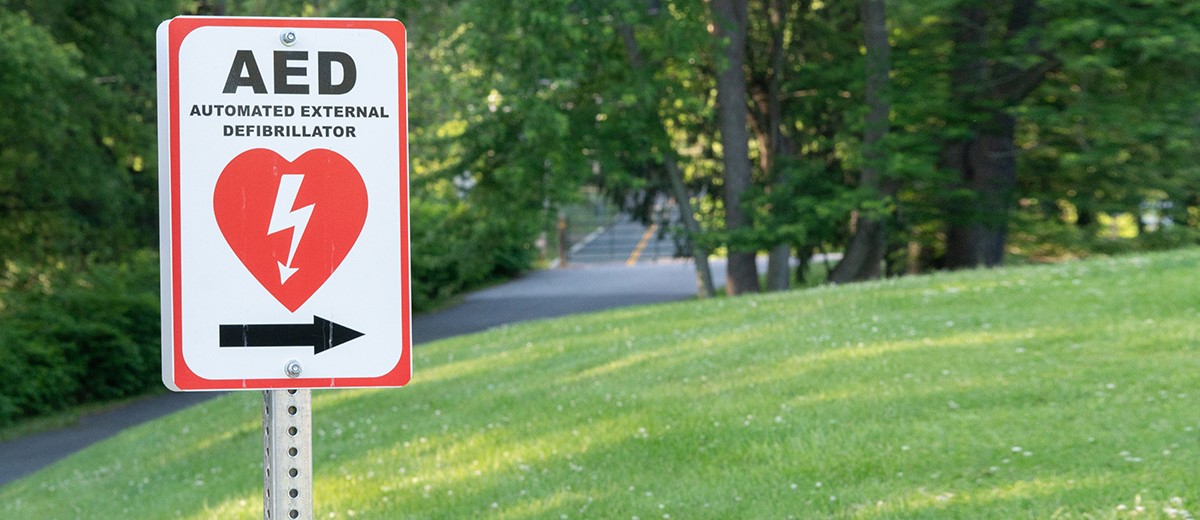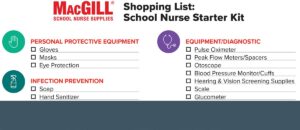When a person suffers a sudden cardiac arrest, or SCA, chances of survival decrease by 7-10% for each minute that passes without defibrillation. Although rare in children, SCA can affect anyone, at any time. Each year in the United States, according to the American Heart Association, SCA claims the lives of over 2,000 children and adolescents, with two in every fifty high schools experiencing at least one sudden cardiac arrest event each year. Furthermore, 10,000 cardiac arrests occur annually in workplace settings around the country. Keeping students, faculty, staff, and visitors safe at school by ensuring a life-saving Automatic External Defibrillator, or AED, is readily available, as well as implementing a comprehensive AED program as part of an effective sudden cardiac arrest response plan, are critical measures in which every school nurse can advocate for and serve in a leadership role.
In 1947, Claude S. Beck, an American surgeon, performed the first ever recorded instance of successful defibrillation on a human being. The theory that electrical shock could restart the heart or correct a heartbeat was first explored in the late 1800s, but it wasn’t until Beck, a pioneer in cardiac surgery, administered an alternating current of 60Hz to the heart of a 14-year-old boy experiencing ventricular fibrillation and on the second try, successfully restored normal sinus rhythm, that defibrillation as we know it today, was born. Nine years later, in 1956, cardiologist Paul Zoll performed the first successful external, or closed chest defibrillation on a human being, and in the mid-1960s, Frank Pantridge invented the first portable defibrillator in Northern Ireland. Weighing over 150 pounds and using car batteries as its source of power, calling it “portable” was a stretch. Over time, the design was improved and in 1978 the first automatic defibrillator was invented, allowing even people without medical training to operate the life-saving devices.
Today’s AEDs are highly sophisticated and, by design, easy to use. Studies have even shown that individuals without any training can effectively use an AED, as directed, by following the clear voice prompts. Currently, less than 50% of all states require AEDs to be placed in schools and there is great variability in the specifications and scope of the policies. With SCA being one of the leading causes of death in the United States, the number one cause of death amongst young athletes, and the fact that ⅕ of the population is on a school campus daily, ensuring an AED is in every school should be a priority. Moreover, data from the American College of Cardiology shows that the hospital survival rate of students after SCA in schools with AEDs is close to 70%, compared with only 8% in the overall population of school-age children–evidence further demonstrating the importance of universal placement of AEDs in schools.
Unfortunately, for many schools and school nurses, it can be difficult to find important specifications on the various AED models, specific guidance or recommendations for the placement and use of AEDs in the school setting, and cost and maintenance can pose challenges. The fact is, AEDs are relatively simple devices that can and do save the lives of both adults and children. Having one in every school is a paramount public health and safety measure and by taking the following eight steps, you can ensure your school is readily prepared.
- Check your state’s specific AED laws.
- Determine the number of AEDs necessary for your school (AEDs should be within 3 minutes of anywhere in the building, placed on each floor of every multi-level building, and portable options should be available for off-campus sporting events).
- Review MacGill’s AED Comparison Chart to select the best AED for your school and understand key differences between various models.
- If needed, research and apply for grants that support AEDs in schools, start a crowdfunding campaign, or partner with a local health system or hospital.
- Further your understanding on advocating for and implementing an SCA response plan.
- Shop MacGill’s selection of AEDs, accessories, and training devices.
- Establish physical placement of the AED(s), ensuring high visibility, security, accessibility, and marked by clear signage.
- Educate, train, and spread awareness to your school community.
Universal placement of AEDs in schools is a safe and effective way to increase survival rates from SCA by upwards of 74%. By going through the steps above, your school can make a significant, life-saving difference.





